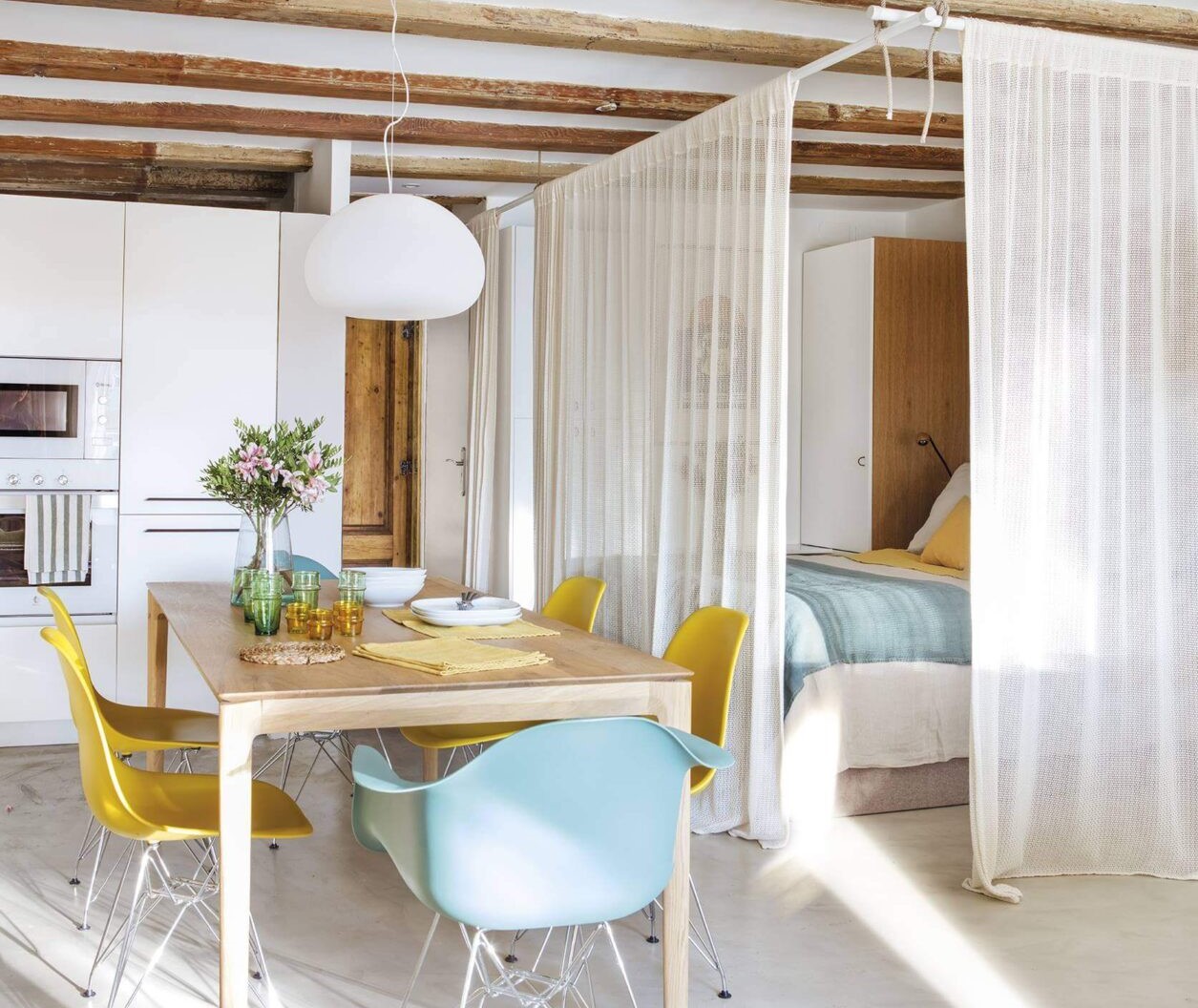

Articles
How To Divide Room With Curtains
Modified: October 20, 2024
Learn how to divide room with curtains in this informative article. Discover creative ideas to optimize your space and create privacy using curtains.
(Many of the links in this article redirect to a specific reviewed product. Your purchase of these products through affiliate links helps to generate commission for Storables.com, at no extra cost. Learn more)
Introduction
When it comes to interior design, finding creative ways to divide a room can completely transform the functionality and aesthetics of your space. While there are various methods to partition a room, one cost-effective and versatile option is to use curtains. Not only can curtains provide privacy and separation, but they also add a touch of elegance and style to any room.
In this article, we will explore the benefits of dividing a room with curtains and guide you through the process of choosing the right curtains, measuring the space, preparing the room, installing curtain rods, hanging the curtains, creating zones, customizing the look, and maintaining and caring for your curtains.
Key Takeaways:
- Dividing a room with curtains offers flexibility, privacy, and style. It’s a cost-effective, versatile solution that allows for easy reconfiguration of space and adds elegance to any room.
- Properly measuring, preparing, and installing curtain rods is crucial. Choosing the right curtains, customizing the look, and maintaining them ensures a functional and visually appealing divide.
Read more: How To Build A Room Divider Curtain
Benefits of Dividing a Room with Curtains
Dividing a room with curtains offers numerous advantages. Firstly, curtains are a flexible option that allows you to easily change the configuration of your space whenever needed. Whether you want to create separate areas for work, relaxation, or entertainment, curtains offer the versatility to adapt to your needs.
Another benefit is the enhanced privacy that curtains provide. In shared living spaces or open floor plans, using curtains allows you to create secluded areas for individual activities without the need for permanent walls. It’s a great solution for apartments or rented spaces where structural changes are not possible.
Curtains also add a touch of elegance and style to your room. The wide range of color options, patterns, and fabrics available allows you to personalize your space and create a visual focal point. From sheer curtains that add a soft and airy feel to heavy drapes that exude luxury, you can find the perfect curtains to complement your interior design.
Choosing the Right Curtains
When selecting curtains for dividing a room, several factors should be considered. Firstly, think about the functionality you require. Do you want curtains that completely block out light and provide privacy or ones that allow for light filtering and a sense of openness? Consider how much natural light is available in the room and how you want it to be distributed.
Next, consider the size and style of the room. Lighter and sheer curtains can make a small space appear larger, while darker and heavier curtains can add a cozy and intimate feel to larger rooms. Take into account the existing color scheme and furniture in the room to ensure that the curtains blend harmoniously with the overall design.
Additionally, consider the fabric and maintenance requirements. If you have children or pets, choosing durable and easy-to-clean fabrics is essential. Polyester and cotton blends are popular options that offer both durability and easy maintenance.
Measuring the Space
Prior to purchasing curtains, accurate measurements of the space are crucial. Start by measuring the width and height of the area you plan to divide. Consider the desired curtain length and whether you want the curtains to touch the floor or hang slightly above it. Remember to account for curtain rod length and any additional decorative elements such as finials.
If you are creating multiple zones within the room, measure the distances between them to determine the lengths of curtains needed for each section. Take note of any windows or doors that may affect the curtain placement and adjust your measurements accordingly.
Preparing the Room
Before you start the installation process, it’s important to prepare the room properly. Clear the area where you will be working, removing any furniture or obstacles that may be in the way. Ensure that the walls and floor are clean and dust-free to avoid leaving any marks or dirt on the curtains.
It’s also a good idea to mark the spots where the curtain rods will be installed. Use a measuring tape and a pencil to mark the desired height and width, ensuring that the marks are level and evenly spaced. This will make the installation process smoother and help you achieve a professional-looking result.
Key Takeaways:
- Dividing a room with curtains offers flexibility, privacy, and style. It’s a cost-effective, versatile solution that allows for easy reconfiguration of space and adds elegance to any room.
- Properly measuring, preparing, and installing curtain rods is crucial. Choosing the right curtains, customizing the look, and maintaining them ensures a functional and visually appealing divide.
Read more: How To Build A Room Divider Curtain
Benefits of Dividing a Room with Curtains
Dividing a room with curtains offers numerous advantages. Firstly, curtains are a flexible option that allows you to easily change the configuration of your space whenever needed. Whether you want to create separate areas for work, relaxation, or entertainment, curtains offer the versatility to adapt to your needs.
Another benefit is the enhanced privacy that curtains provide. In shared living spaces or open floor plans, using curtains allows you to create secluded areas for individual activities without the need for permanent walls. It’s a great solution for apartments or rented spaces where structural changes are not possible. Curtains act as visual barriers, preventing people from seeing into specific areas of the room, and giving you a sense of privacy.
Curtains also add a touch of elegance and style to your room. The wide range of color options, patterns, and fabrics available allows you to personalize your space and create a visual focal point. From sheer curtains that add a soft and airy feel to heavy drapes that exude luxury, you can find the perfect curtains to complement your interior design.
Additionally, dividing a room with curtains can help with noise control. If you have a noisy home environment or live in an apartment building with thin walls, curtains can act as a barrier to absorb or block out sound, creating a quieter and more peaceful space.
Furthermore, using curtains to divide a room can enhance the functionality of your space. For example, you can create a dedicated workspace by putting up curtains between your living area and your desk. This separation can help you focus on your work and reduce distractions, improving productivity.
Dividing a room with curtains can also be a budget-friendly option compared to other room-dividing methods. Building permanent walls or installing sliding doors can be expensive and time-consuming. Curtains provide a cost-effective alternative that still achieves the desired separation and visual appeal.
Lastly, curtains can be easily adjusted or removed if you want to restore the open floor plan. Whether you’re hosting a gathering or simply want to enjoy a more spacious feel, you can quickly open up the room by pulling the curtains aside or taking them down. This flexibility allows you to change the room layout as needed without any permanent alterations.
Overall, dividing a room with curtains offers a range of benefits, including flexibility, privacy, style, noise control, improved functionality, cost-effectiveness, and easy adjustability. By carefully selecting the right curtains and properly installing them, you can transform your space and create distinct areas that fit your lifestyle and design preferences.
Choosing the Right Curtains
When it comes to choosing curtains for dividing a room, there are several factors to consider to ensure you make the right choice. The right curtains can not only create a functional divide but also add style and enhance the overall aesthetics of your space.
Firstly, think about the functionality you require from the curtains. Determine whether you want curtains that completely block out light and provide maximum privacy or ones that allow natural light to filter through while still offering some level of privacy. Consider the purpose of each divided area and how you want light to be distributed within the room.
Next, consider the size and style of the room. Lighter-colored or sheer curtains can create a sense of spaciousness and make a small room appear larger, while darker or heavier curtains can add warmth and coziness to larger spaces. Take into account the existing color scheme and décor in the room to ensure that the curtains blend harmoniously with the overall design.
Consider the fabric of the curtains. The choice of fabric not only affects the look and feel of the curtains but also their durability and maintenance. If you have children or pets, it’s important to choose fabrics that are easy to clean and can withstand daily wear and tear. Common fabric options include cotton, polyester blends, silk, or linen, each with its own unique characteristics and maintenance requirements.
Another aspect to consider is the curtain length. Decide whether you want the curtains to touch the floor for a more formal and elegant look or if you prefer them to hang slightly above the floor for a more casual and modern feel. Keep in mind that the length of the curtains may also depend on the height of the ceiling and the specific style you’re aiming for.
When it comes to curtain hardware, consider the type of curtain rods and brackets that will best suit your needs. There are various options available, such as tension rods, traverse rods, or decorative rods, each with its own installation requirements and maximum weight capacities. Don’t forget to take into account the weight of your chosen curtain fabric when selecting the appropriate curtain rod.
Lastly, be sure to take accurate measurements of the space before purchasing your curtains. Measure the width and height of the area you plan to divide, and consider the desired curtain length as well. This will ensure that you purchase the right size and quantity of curtains for your specific needs.
In summary, when choosing curtains for dividing a room, think about the functionality, style, fabric, length, and hardware that will best suit your space. Consider factors such as light control, room size, existing décor, and maintenance requirements to make an informed decision. By selecting the right curtains, you can create a visually appealing and functional divide in your room.
Measuring the Space
Accurate measurements are crucial when it comes to dividing a room with curtains. Proper measurements ensure that the curtains fit the space correctly and create the desired division. Here are some steps to help you measure the space effectively:
1. Measure the width: Start by measuring the width of the area you plan to divide. Use a measuring tape and measure from one end of the wall to the other. It’s important to measure the actual width rather than relying on estimations to ensure a precise fit.
2. Determine the curtain length: Decide on the desired length of your curtains. This will depend on personal preference and the overall look you want to achieve. Measure from the desired height at which you want the curtains to hang down to the floor. Alternatively, you can measure up to the desired point above the floor if you want the curtains to hover slightly above the ground.
3. Consider the curtain rod placement: Take into account the placement of the curtain rod brackets and the position of any windows or doors. If you plan to install the curtain rods above the window frames or higher on the wall, measure from that point to the desired curtain length. This will ensure that the curtains cover the window or door appropriately.
4. Account for additional width: If you want your curtains to fully cover the wall space when closed, add several inches to the width measurement. This extra width allows the curtains to overlap in the middle when closed, ensuring privacy and preventing light from entering between the panels.
5. Measure multiple areas: If you are creating multiple zones within the room, measure the distances between each section. This will help you determine the appropriate curtain lengths needed for each area of the room.
6. Adjustments for curtain type: Keep in mind that different curtain styles may require different measurements. For example, if you plan to use grommet curtains, you may need to adjust your measurements to accommodate the space required for the grommets at the top of the curtain panels.
7. Double-check your measurements: Before purchasing the curtains, double-check all your measurements to ensure accuracy. It’s always better to measure twice and purchase the correct size rather than ending up with curtains that are too short or too long for the space.
By taking the time to measure the space accurately, you can avoid potential issues and ensure that the curtains fit perfectly when it’s time to install them. Proper measurements will result in a professional-looking divide and help you achieve the desired aesthetic and functionality within your room.
Preparing the Room
Before you begin the process of dividing a room with curtains, it’s important to properly prepare the space to ensure a successful installation. Taking the time to prepare the room will help create a clean and organized environment and make the installation process smoother.
Here are some steps to help you prepare the room:
1. Clear the area: Start by removing any furniture, decor, or other items that may obstruct your work area. Clearing the space will give you ample room to maneuver and make it easier to install the curtain rods and hang the curtains. Store the items in a nearby space or temporarily move them to another room until the installation is complete.
2. Clean the walls and floor: Before installing the curtain rods, it’s important to ensure that the walls and floor are clean and free from debris. Wipe down the walls to remove any dust, dirt, or smudges that may interfere with the installation process or end up on the curtains. Sweep or vacuum the floor to eliminate any loose dirt or particles that could dirty the curtains when they are hung.
3. Mark the spots for curtain rod installation: Use a measuring tape and a pencil to mark the desired spots for installing the curtain rods. Measure and mark the height where you want the rods to be positioned and ensure that the marks are level and evenly spaced. Take into account the measurements you previously determined during the planning phase. These marks will serve as your guide during the installation process.
4. Gather the necessary tools: Before you begin installing the curtain rods, gather all the necessary tools. This may include a drill, screws, anchors (if necessary), a level, a screwdriver, a measuring tape, and any additional hardware specific to your curtain rod setup. Having all the tools readily available will make the installation process faster and more efficient.
5. Protect the floor and furniture: To avoid potential damage or mess, consider placing a drop cloth or plastic sheet on the floor below the area where you will be working. This will catch any debris or dust that may fall during the installation process. If there are nearby pieces of furniture or delicate items, cover them with a sheet or cloth to prevent accidental damage or scratches.
By following these preparation steps, you will create an ideal environment for dividing the room with curtains. Preparation will not only make the installation process easier but also help to protect your space and belongings. With a clean and organized room, you can proceed to the next steps with confidence and ensure a successful outcome.
Read more: How To Divide Living Room
Installing Curtain Rods
Installing curtain rods is a crucial step in dividing a room with curtains. Properly installed curtain rods ensure that the curtains hang securely and function effectively. Here is a step-by-step guide to help you install curtain rods:
1. Gather the necessary tools: Before you begin, gather the tools and hardware required for the installation. This typically includes a drill, screws, anchors (if necessary), a screwdriver, a level, and a measuring tape. Ensure that you have the correct hardware for your specific curtain rod setup.
2. Measure and mark the spots: Use your measuring tape and pencil to measure and mark the spots where the curtain rod brackets will be installed. Use the marks you made during the preparation phase to ensure that the brackets are positioned at the desired height and evenly spaced.
3. Prepare the brackets: If your curtain rod brackets require assembly, follow the manufacturer’s instructions to put them together. This may involve attaching any necessary components, such as support arms or decorative finials.
4. Install the brackets: Using a drill and the appropriate screws, attach the brackets to the marked spots on the wall. Ensure that the brackets are securely fastened and level. If you are installing heavy curtains or have a wide span, consider using anchors to provide additional support and stability.
5. Double-check the level: After installing the brackets, use a level to ensure that they are perfectly horizontal. Adjust them if necessary to guarantee that the curtain rod will hang straight and not appear slanted.
6. Attach the curtain rod: Slide the curtain rod through the rod pocket or rings on your curtains. Then, place the rod onto the installed brackets. Depending on the curtain rod style, you may need to secure it in place using screws, brackets with clamps, or other tightening mechanisms.
7. Test the stability: Give the curtain rod a gentle tug to ensure it is securely installed and can withstand the weight of the curtains. Make any necessary adjustments or additional tightening to ensure the rod is stable and won’t come loose over time.
8. Repeat for additional rods: If you are dividing the room with multiple curtain rods, repeat the installation process for each rod. Ensure that all brackets are properly aligned and positioned at the same height for a uniform appearance.
By following these steps, you can successfully install curtain rods for dividing your room with curtains. Pay attention to detail, double-check measurements, and use proper tools and hardware to achieve a secure and visually pleasing result. Once the rods are installed, you can proceed to the next step of hanging the curtains and creating the desired division in your room.
Hanging the Curtains
Hanging the curtains is an exciting step in the process of dividing a room. Properly hung curtains not only add style and privacy but also create a functional and visually appealing divide. Here is a step-by-step guide to help you hang your curtains:
1. Prepare the curtains: Before hanging the curtains, ensure they are clean and wrinkle-free. If necessary, iron or steam the curtains to remove any creases. If your curtains have a rod pocket, make sure the pocket is unfolded and ready to slide onto the curtain rod. If you are using curtains with rings or clips, attach them securely to the top edge of the curtains.
2. Determine the curtain length: Consider the desired length of your curtains. Decide whether you want them to touch the floor for a more formal look or if you prefer them to hover slightly above the floor for a more casual appearance. Ensure that the curtains are properly hemmed or tailored to the desired length if needed.
3. Mount the curtain rod: Refer to the previous section on installing curtain rods and make sure your curtain rods are securely mounted in place. Ensure that the rods sit level and are evenly spaced to provide a balanced appearance.
4. Slide the curtains onto the rod: If you’re using curtains with a rod pocket, simply slide the rod into the pocket at the top of the curtain panel until it is evenly distributed. If you’re using curtains with rings or clips, slide the rings or clips onto the curtain rod, spacing them evenly along the rod’s length.
5. Adjust the curtains: Step back and assess the height and positioning of the curtains. Make any necessary adjustments to ensure the curtains are hanging evenly and at the desired height. Use a level to guarantee that the curtains are straight and not slightly slanted.
6. Style the curtains: Once the curtains are hung, take the time to style them for a polished look. If you’re using curtains with ties or holdbacks, secure them to the side to create an elegant drape. Smooth out any wrinkles or folds in the fabric to ensure a neat appearance.
7. Test the functionality: Before finalizing the curtain placement, test the curtains to make sure they can be closed and opened smoothly. Ensure that the curtains can cover the desired area or zone when closed and that they can be easily moved aside when you want to open up the space.
8. Step back and admire: Once you’re satisfied with the curtain placement, step back and admire your newly divided room. Take in the visual impact created by the curtains and appreciate the functional separation they provide. Make any final adjustments if necessary.
By following these steps, you can hang your curtains effectively to divide the room with style and functionality. Whether you opt for a formal or a casual look, carefully hanging your curtains will help transform your space and create distinct areas within the room.
Creating Zones with Curtains
One of the key benefits of dividing a room with curtains is the ability to create distinct zones within a single space. By strategically placing curtains, you can designate separate areas for various activities or functions. Here are some tips to help you create zones with curtains:
1. Define the purpose of each zone: Determine how you want to use each designated area. Are you creating a workspace, a cozy reading nook, or a play area for kids? Defining the purpose of each zone will help you determine the size and location of the curtains.
2. Choose the placement of the curtains: Consider the layout of the room and the desired flow between zones. Decide where you want to position the curtains to create the division. For example, you might place curtains to separate the living area from the dining space or to create a private area for sleeping in a studio apartment.
3. Use curtains as visual dividers: Curtains can act as visual dividers, defining the boundaries between different zones without completely isolating them. Opt for sheer or semi-sheer curtains to maintain a sense of openness while still providing a subtle distinction between areas.
4. Opt for thicker curtains for enhanced privacy: If privacy is important for certain zones, choose thicker curtains that provide a greater level of privacy. This is particularly relevant for areas such as bedrooms, home offices, or dressing rooms.
5. Play with different curtain colors and patterns: Use curtains to add visual interest to each zone. Choose curtains in different colors, patterns, or textures to create unique visual statements. Consider how the curtains will harmonize or contrast with the existing décor in each zone.
6. Experiment with curtain tiebacks or holdbacks: Curtain tiebacks or holdbacks can be a useful addition to control the openness and fluidity of the space. You can use tiebacks to keep curtains neatly gathered when you want to open up the room, or release them to create a more defined separation.
7. Consider layering curtains: Layering curtains can add depth and texture to each zone. Combine sheer curtains with heavier drapes or blinds to achieve a layered look. This not only enhances the visual appeal but also allows for greater control of light and privacy.
8. Customize the height of curtain placement: The height at which you install the curtains can also help define the zones. For example, you might choose to hang curtains from the ceiling to create a sense of enclosure for a specific area, or opt for shorter curtains to allow for easy movement between zones.
Remember, the goal is to create a cohesive and functional space that suits your needs and preferences. Be creative with your curtain placement and design choices to achieve the desired zones within the room. Through careful planning and execution, curtains can effectively divide the room into separate areas while maintaining an overall sense of unity and style.
Customizing the Look
When dividing a room with curtains, you have the opportunity to customize the look and create a unique aesthetic that reflects your personal style. Customization allows you to add a personal touch and make a bold statement with your curtains. Here are some tips on how to customize the look when dividing a room with curtains:
1. Choose curtains that complement your overall design: Consider the existing décor and color scheme in the room when selecting curtains. Choose curtains that harmonize with the overall design to create a cohesive look. If you have a particular theme or style in mind, find curtains that align with that vision.
2. Play with colors and patterns: Curtains come in a wide range of colors and patterns, allowing you to infuse personality into your room. Opt for vibrant and bold colors to make a statement, or choose neutral tones for a more subtle and sophisticated look. Patterns such as stripes, florals, or geometric designs can also add visual interest and create a focal point in the room.
3. Consider different fabric textures: Experiment with different fabric textures to add depth and dimension to your curtains. Silk, velvet, linen, or lace curtains can bring a touch of luxury and elegance to the space. Mix and match different textures to create a visually dynamic environment.
4. Add decorative elements: Thinking beyond the curtains themselves, consider incorporating decorative elements to enhance the overall look. For example, you can add curtain holdbacks or tiebacks with decorative accents that complement the room’s design. Curtain rods and finials also come in various styles and finishes, allowing you to customize their appearance.
5. Experiment with layers: Layering curtains can create a luxurious and upscale look. Combine sheer curtains with heavier drapes or blinds to add depth and texture to the space. This layering technique allows for greater control of light, privacy, and aesthetics.
6. Think about curtain lengths: Curtain lengths can influence the overall look and feel of the room. Consider different lengths based on your preference and the design you want to achieve. Floor-length curtains create a more formal and dramatic effect, while curtains that hover slightly above the floor offer a more casual and contemporary vibe.
7. Incorporate tiebacks or holdbacks: Tiebacks or holdbacks can add style and functionality to your curtains. They can be used to create elegant drapes when you want to open up the room, or released to allow the curtains to fall naturally. Choose tiebacks or holdbacks that match the theme or style of your room for a cohesive look.
8. Personalize with accessories: To further customize the look, consider adding accessories such as valances, tassels, or trims to your curtains. These decorative elements can add flair and uniqueness to the design, making your curtains stand out and reflect your personal style.
Remember, the goal of customizing the look is to create a space that is a true reflection of your individual taste and preferences. Use curtains as an opportunity to showcase your personal style and create a visually appealing and inviting environment. With thoughtful customization, your divided room will become a standout feature in your home.
Read more: How To Divide A Living Room And Dining Room
Maintenance and Care Tips
Maintaining and caring for your curtains is essential to ensure their longevity and keep them looking fresh and beautiful. Here are some tips to help you properly maintain and care for your curtains:
1. Regular cleaning: Dust and debris can accumulate on your curtains over time, so it’s important to clean them regularly. Read the care instructions provided by the manufacturer to determine the appropriate cleaning method for your curtains. Some curtains may be machine washable, while others may require professional cleaning or spot cleaning. Follow the recommended cleaning instructions to avoid damaging the fabric.
2. Vacuuming or dusting: Between deep cleanings, it’s a good idea to vacuum or dust your curtains regularly to remove any loose dirt or dust. Use a soft brush attachment or a handheld vacuum on a low setting to gently remove particles from the fabric. Be sure to pay attention to the pleats, hems, and folds of the curtains where dust tends to accumulate.
3. Spot clean stains: If you notice a stain on your curtains, it’s important to act quickly. Use a mild detergent or stain remover specifically designed for the fabric of your curtains. Apply a small amount to a clean cloth and gently blot the stain, being careful not to scrub and spread the stain further. Test the cleaning solution on a hidden area of the curtain first to ensure it doesn’t cause discoloration or damage.
4. Protect from sunlight: Prolonged exposure to direct sunlight can cause fading and damage to your curtains over time. Consider using sheer curtains, blinds, or other window treatments to provide protection from UV rays. Alternatively, you can rotate the curtains periodically to ensure even sun exposure and prevent one area from fading more than others.
5. Check and repair hardware: Regularly inspect the curtain rods, brackets, and other hardware to ensure they are secure and functioning properly. Loose or damaged hardware can cause the curtains to sag or fall, so tighten screws or replace any damaged components as needed. This will help maintain the integrity of your curtains and prevent accidents.
6. Adjust for seasonal changes: Depending on the season, you may need to make adjustments to your curtains. During warmer months, consider using lighter and sheer curtains to allow for more airflow and natural light. In colder months, use heavier curtains or thermal-lined curtains to help insulate the room and retain heat.
7. Steam or iron out wrinkles: To keep your curtains looking crisp and wrinkle-free, use a handheld steamer or carefully iron them on a low heat setting. Be sure to follow the fabric care instructions, as some fabrics may require extra caution when using a steamer or iron.
8. Store properly when not in use: If you plan to remove the curtains temporarily or change up the room’s configuration, properly store them to avoid damage. Ensure that the curtains are clean and completely dry before folding or rolling them. Store them in a cool, dry place away from direct sunlight to prevent fading or discoloration.
By following these maintenance and care tips, you can extend the lifespan of your curtains and keep them looking their best. Regular cleaning, proper handling, and routine inspections will help preserve the appearance and functionality of your curtains for years to come.
Conclusion
Dividing a room with curtains is a versatile and stylish solution that allows you to create distinct zones within your space. By carefully choosing the right curtains, measuring the space accurately, and properly installing the curtain rods, you can achieve a functional and visually appealing divide.
The benefits of dividing a room with curtains are numerous. Curtains offer flexibility, allowing you to easily reconfigure your space according to your needs. They provide privacy in shared living areas and can act as a cost-effective alternative to permanent walls. Moreover, curtains add elegance and style to your room, with various colors, patterns, fabrics, and textures available to suit your personal taste and complement your existing decor.
When dividing a room with curtains, it is essential to properly measure the space to ensure a precise fit. Preparing the room by clearing the area, cleaning the walls, and marking the spots for curtain rod installation will create the optimal environment for a successful installation.
Installing curtain rods accurately is crucial for the stability and function of the divided space. Carefully follow the steps to mount the brackets securely and ensure that the curtain rod is level and properly supported.
Hanging the curtains is the exciting final step that brings the divided room to life. Choosing curtains that complement your design scheme, playing with different colors, patterns, and textures, and incorporating decorative elements allow you to customize the look and create a unique aesthetic. Pay attention to curtain length, style, and layering techniques to achieve the desired visual impact.
Remember to maintain and care for your curtains to preserve their beauty and functionality. Regular cleaning, proper storage, and routine inspections of the hardware will help ensure their longevity. Make adjustments as needed for seasonal changes and protect the curtains from excessive sunlight exposure.
In conclusion, dividing a room with curtains is a versatile and practical solution to create distinct zones within a space. With careful planning, thoughtful design choices, and proper maintenance, your divided room will not only provide privacy and functionality but also showcase your personal style and create a visually appealing environment to enjoy.
Frequently Asked Questions about How To Divide Room With Curtains
Was this page helpful?
At Storables.com, we guarantee accurate and reliable information. Our content, validated by Expert Board Contributors, is crafted following stringent Editorial Policies. We're committed to providing you with well-researched, expert-backed insights for all your informational needs.
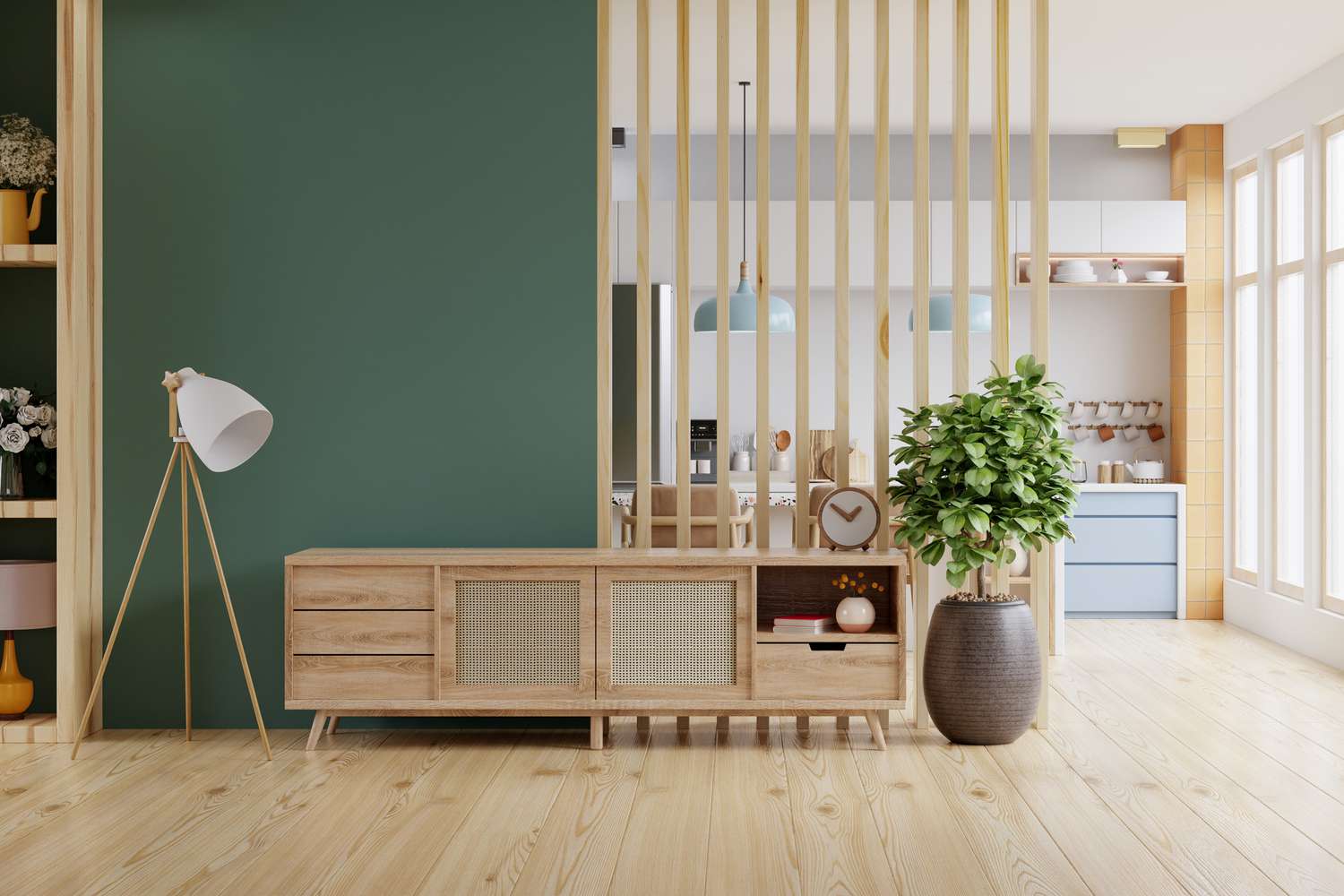
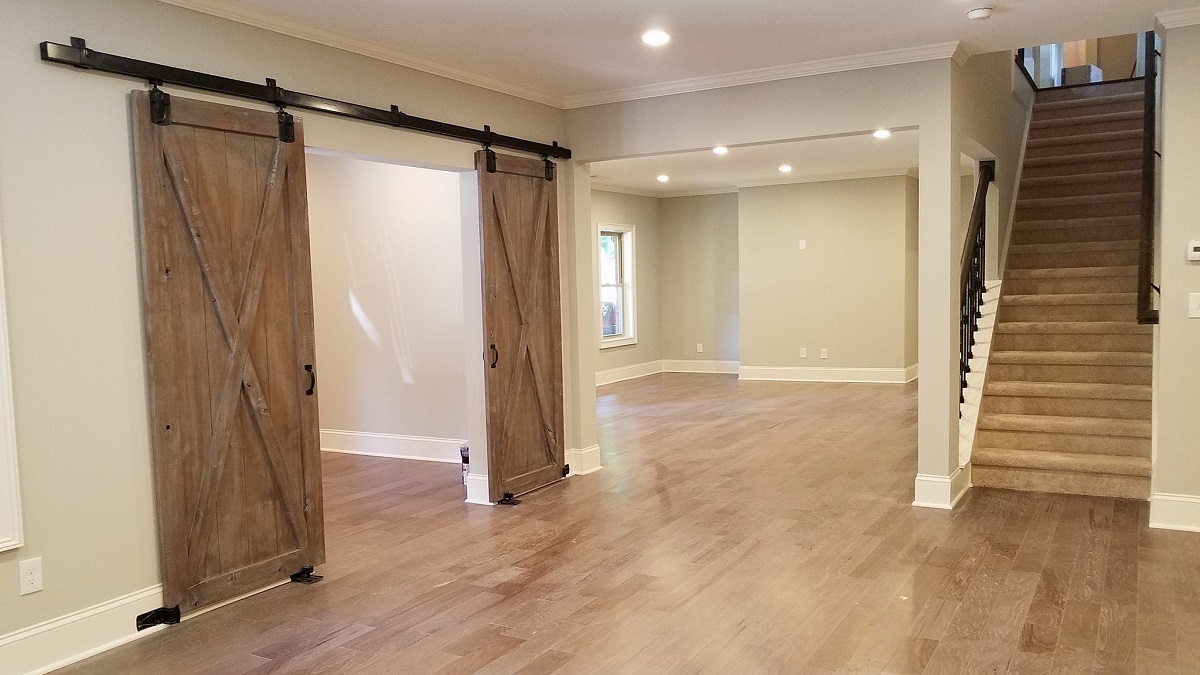
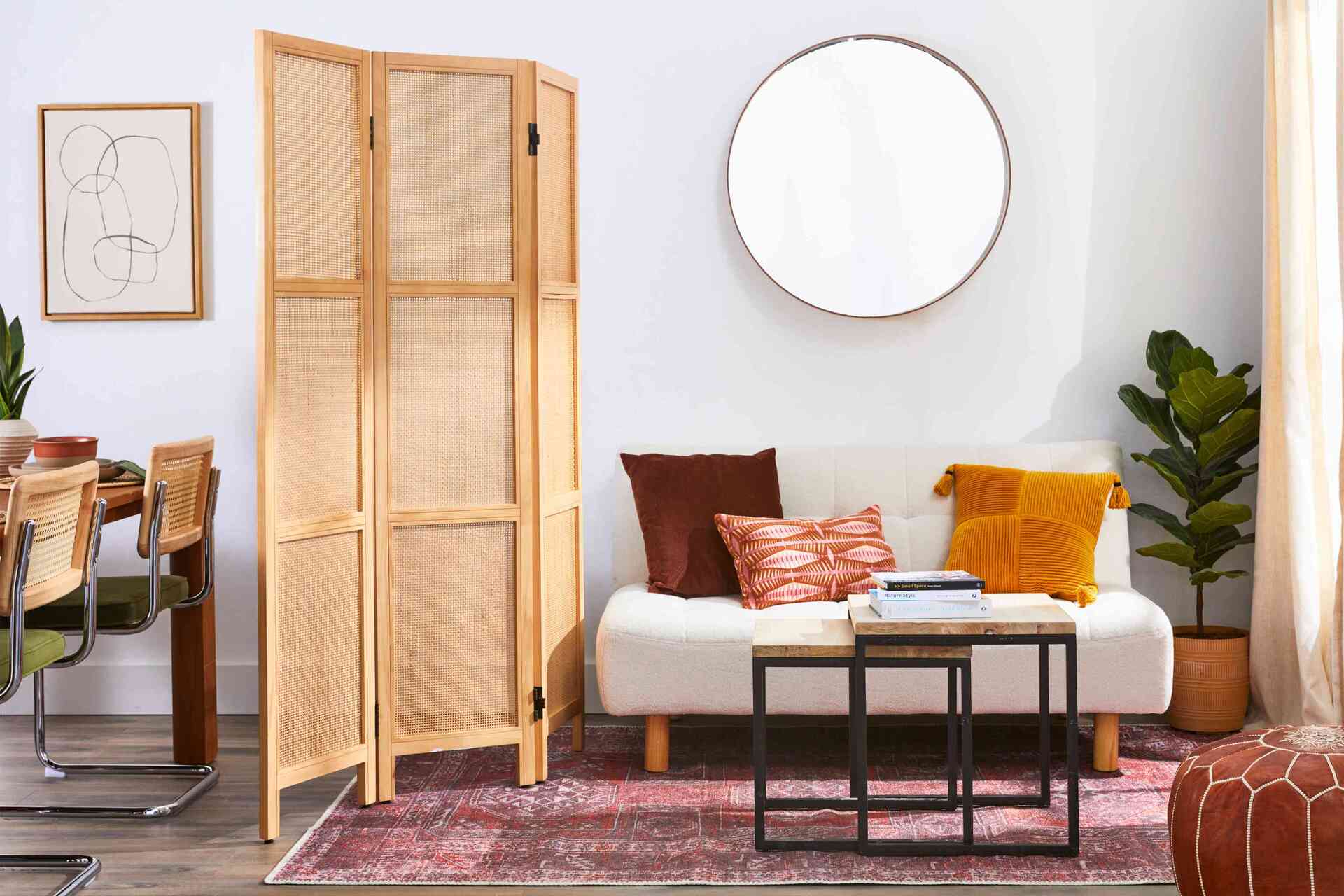
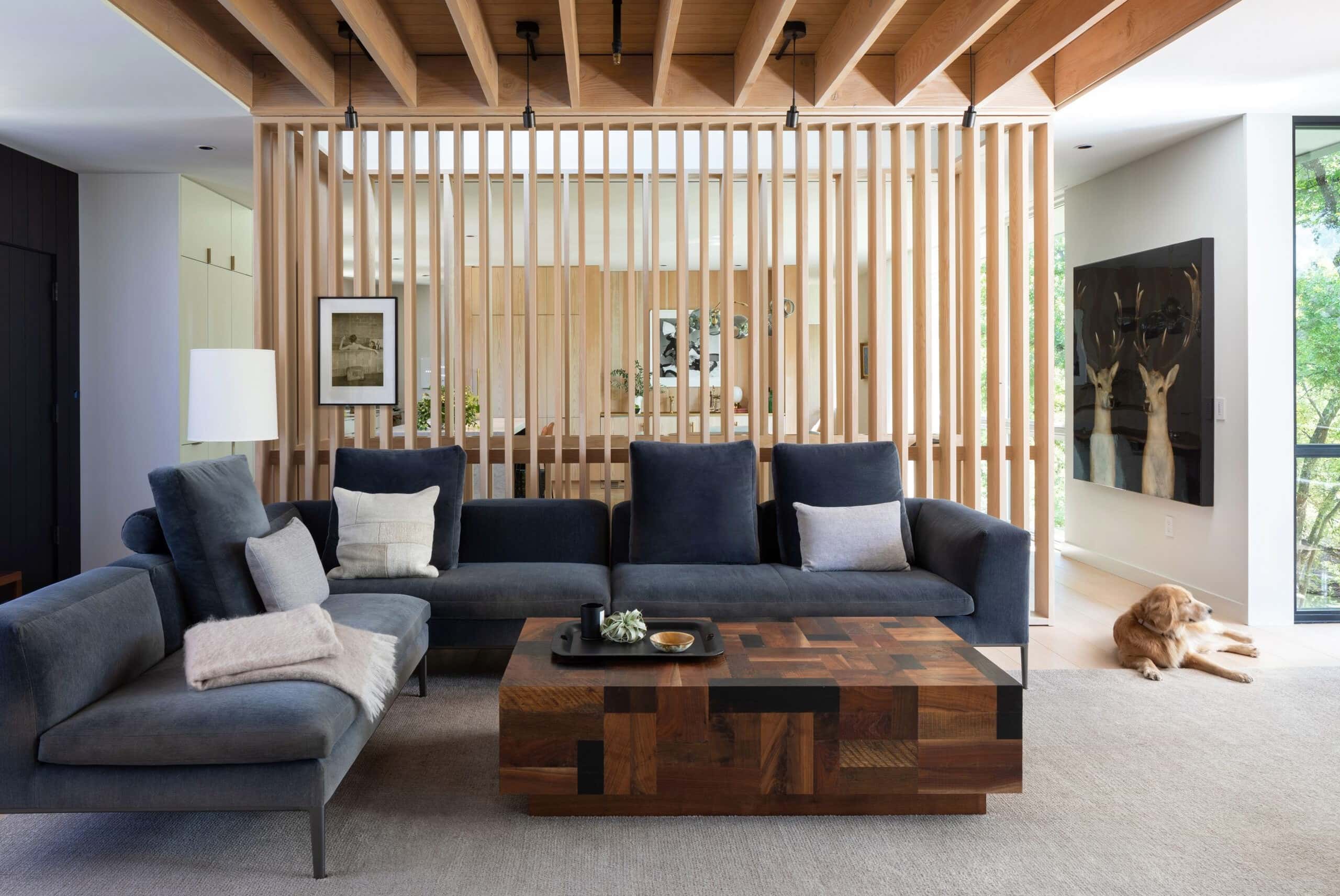
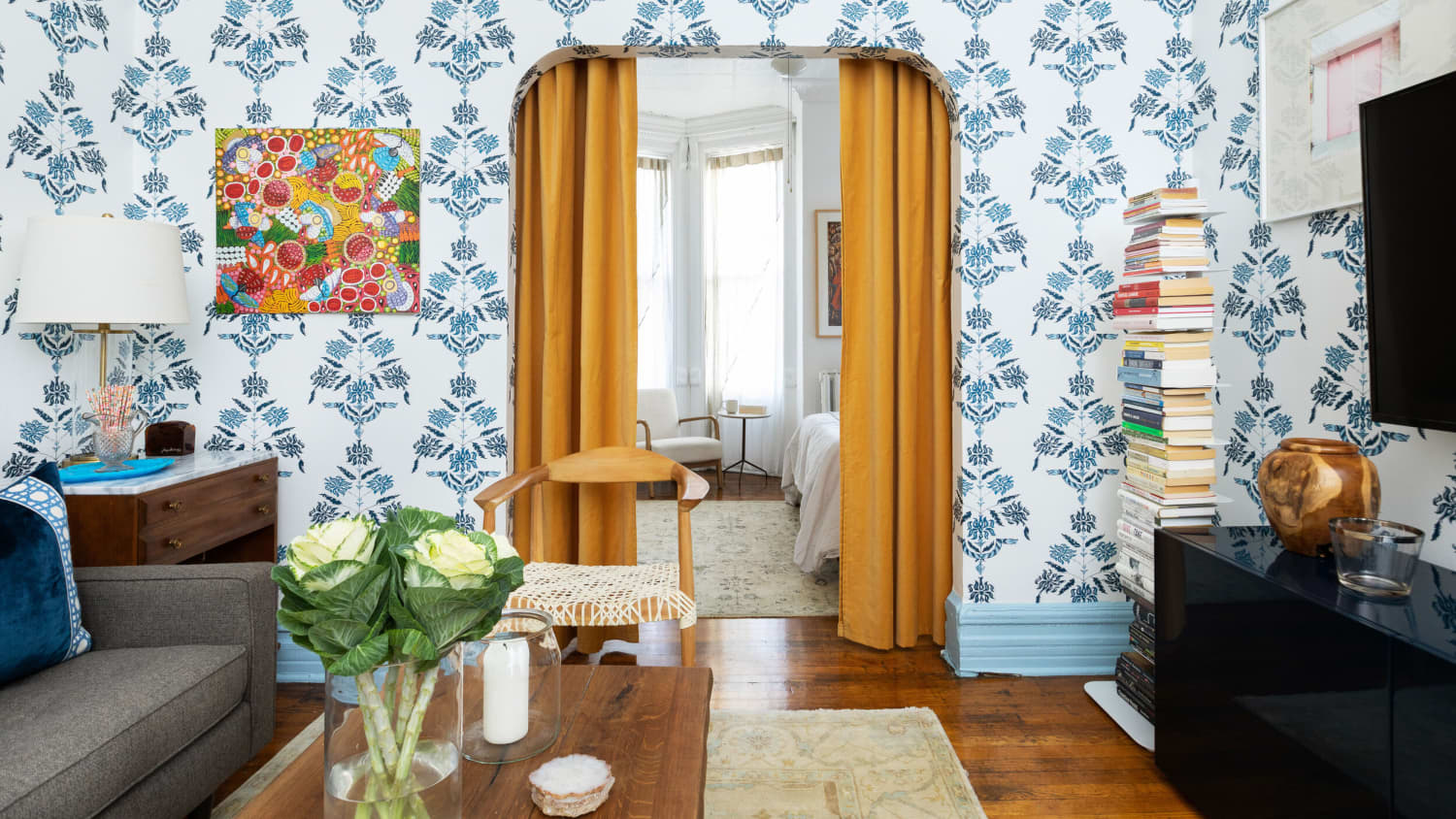
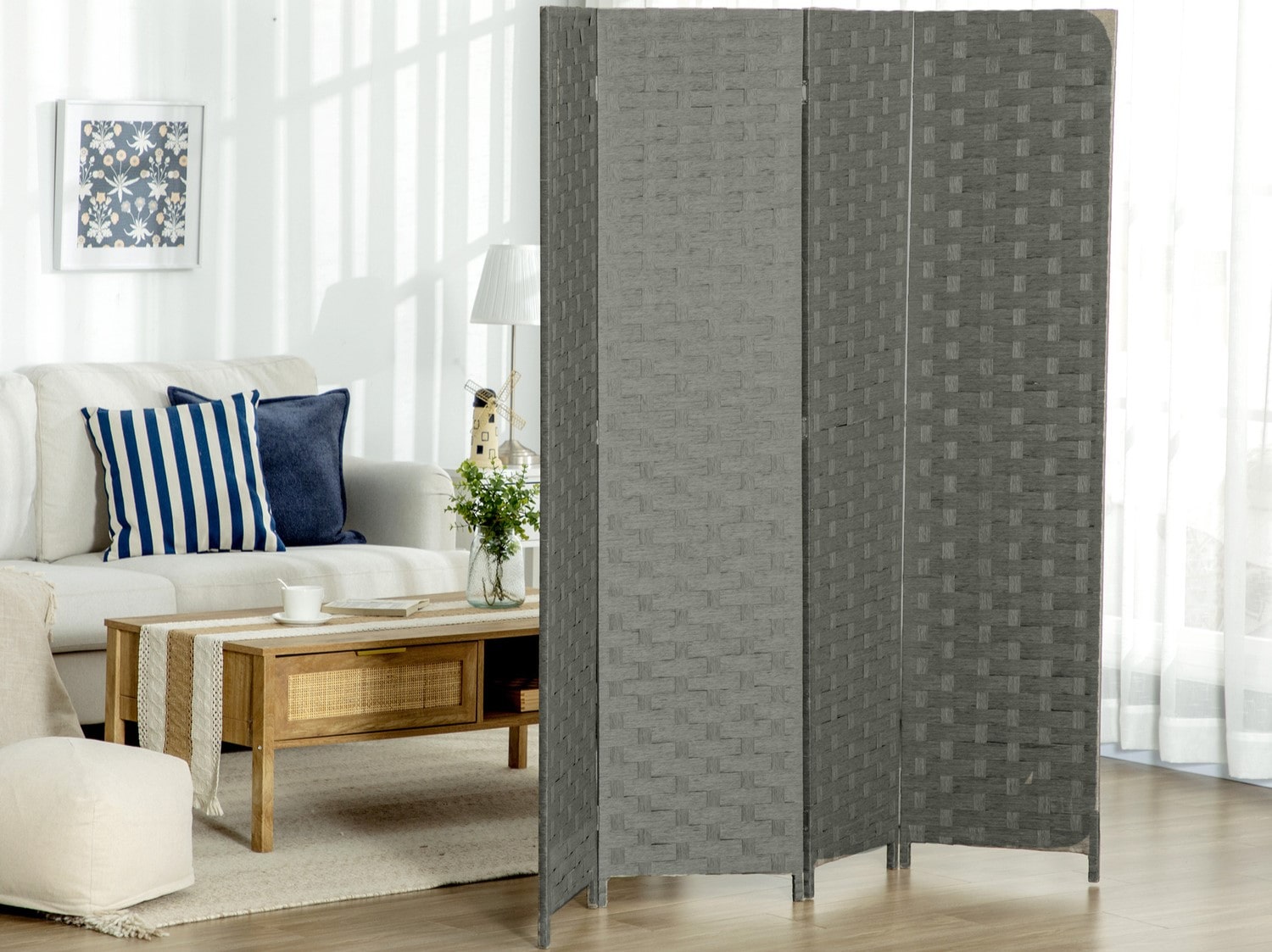
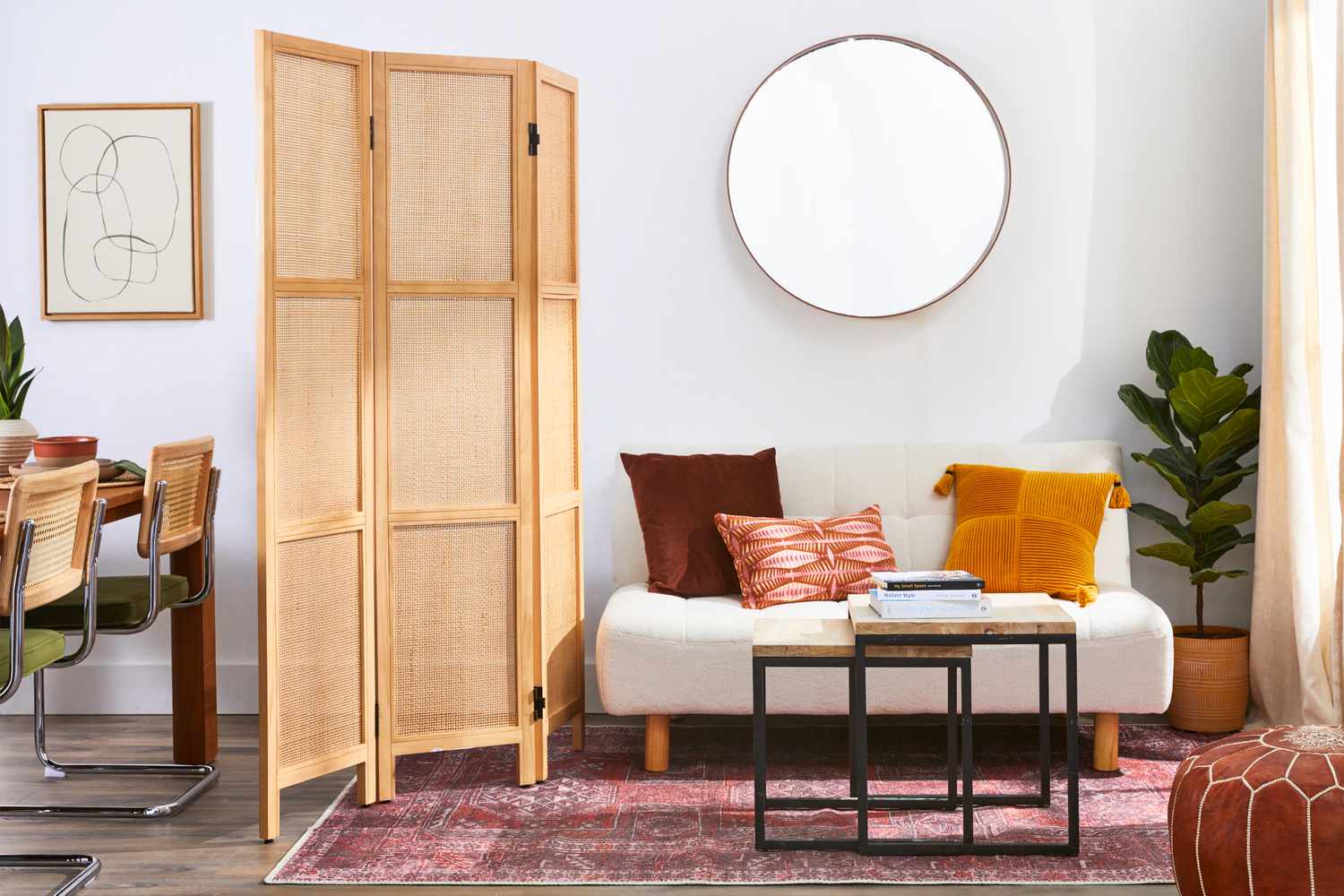
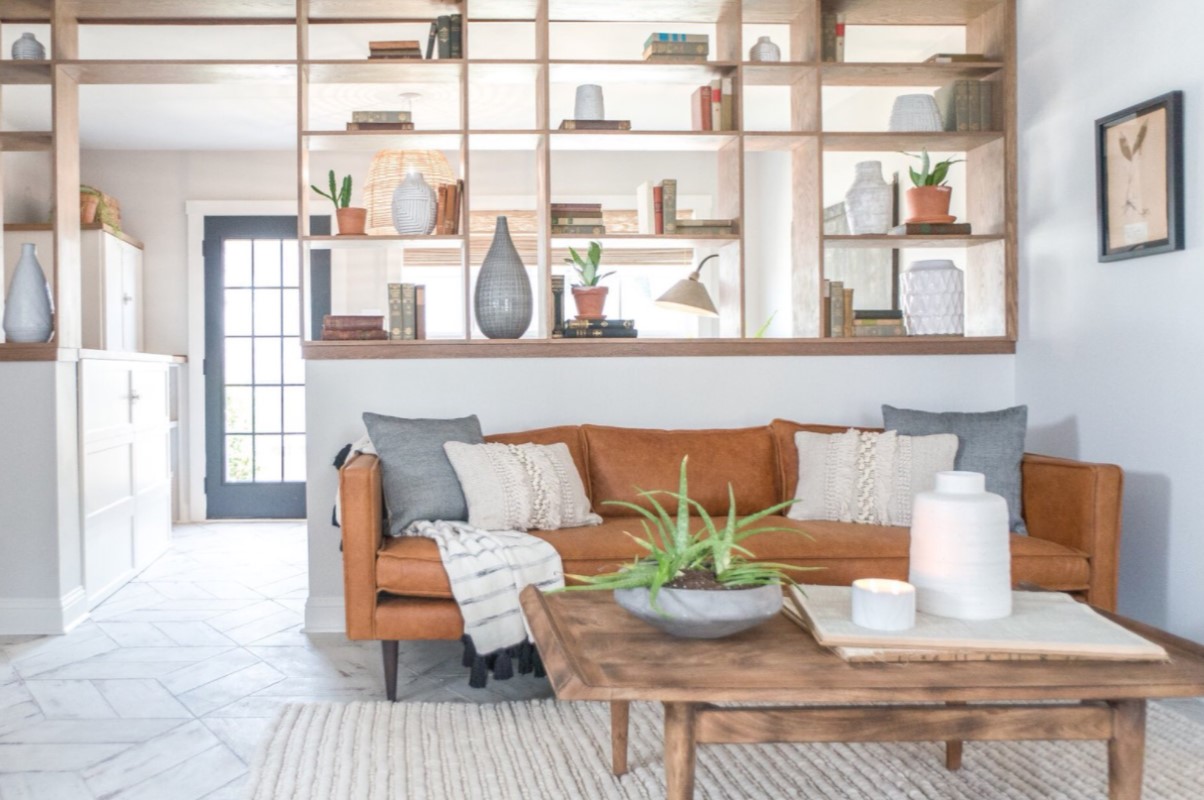
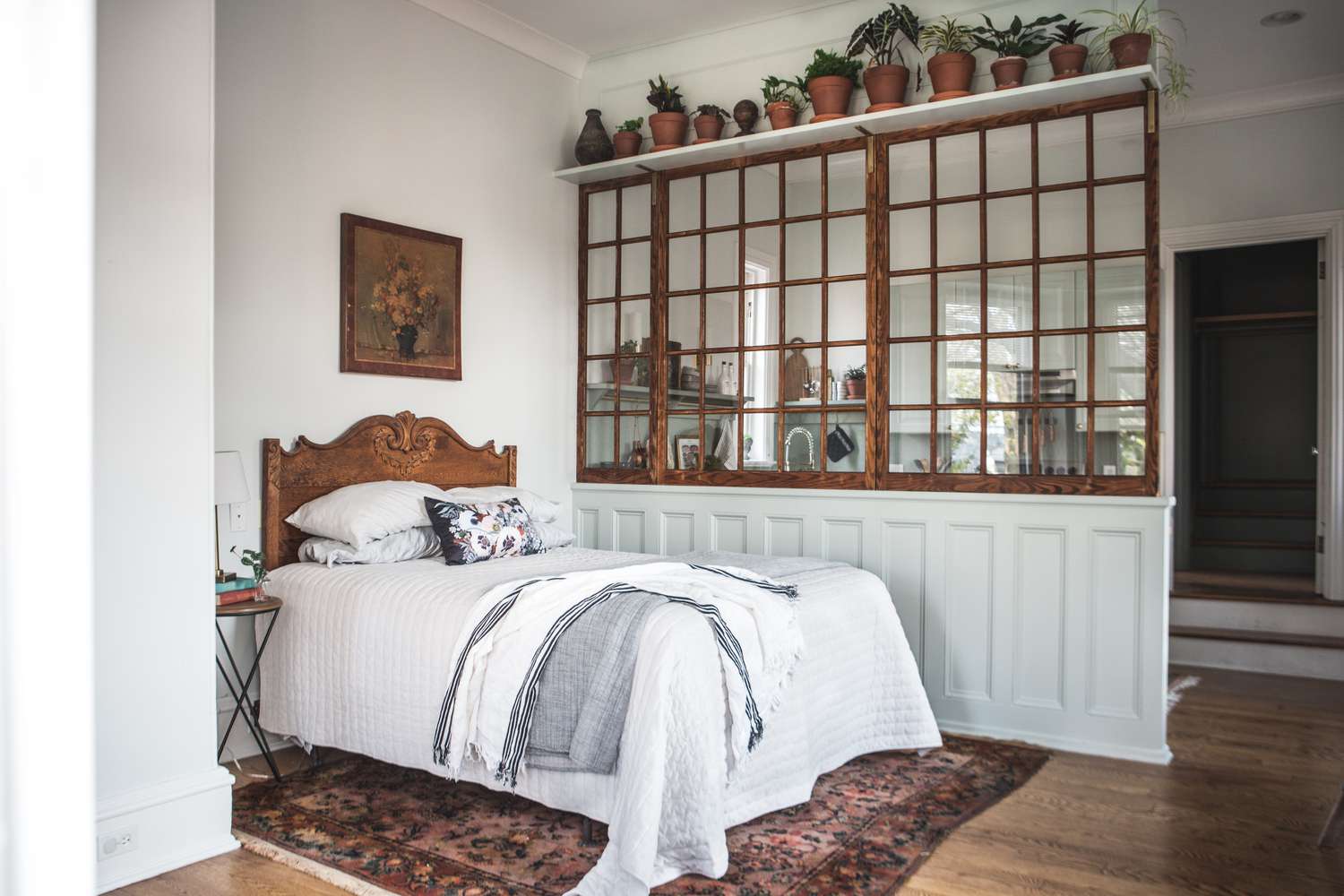
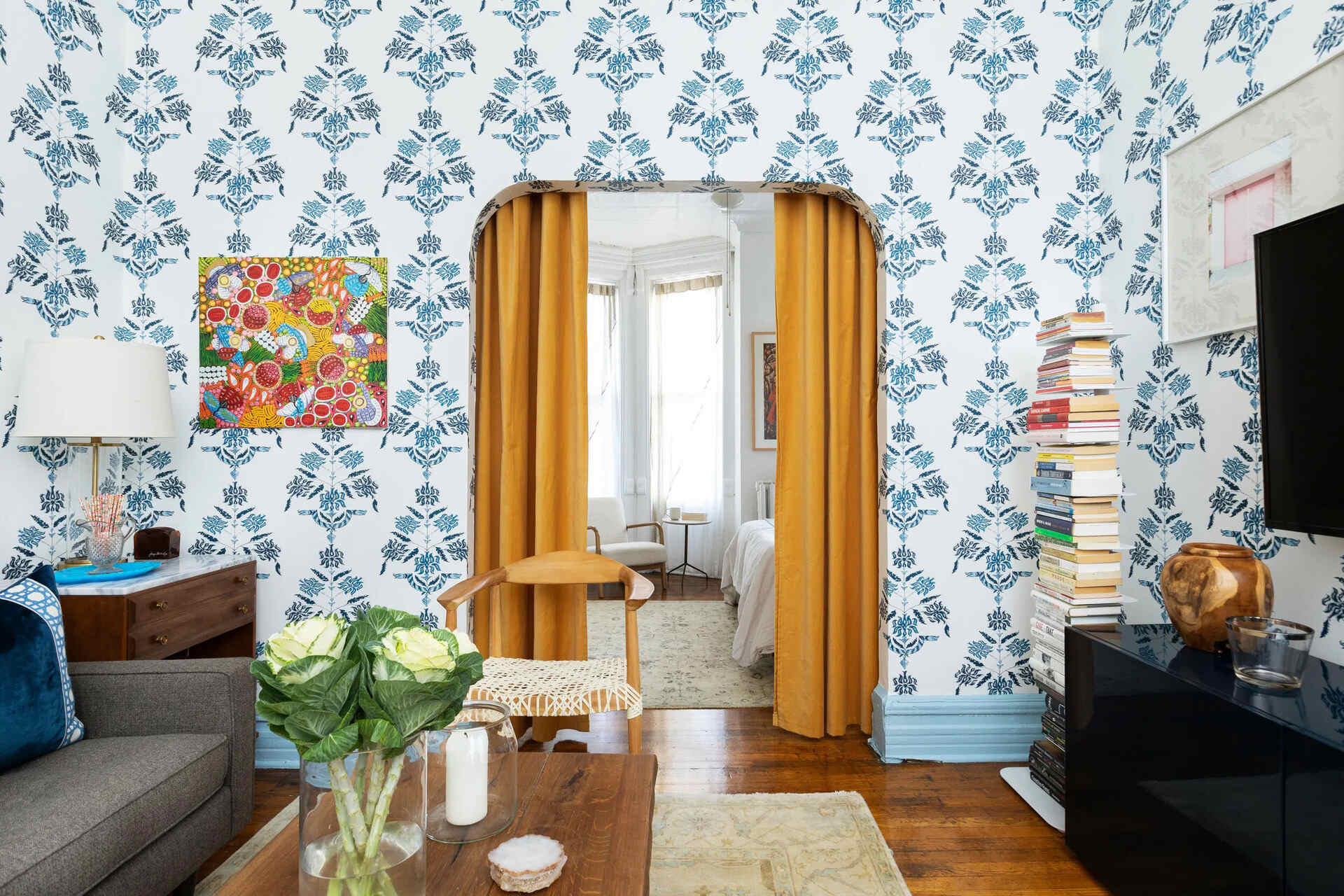
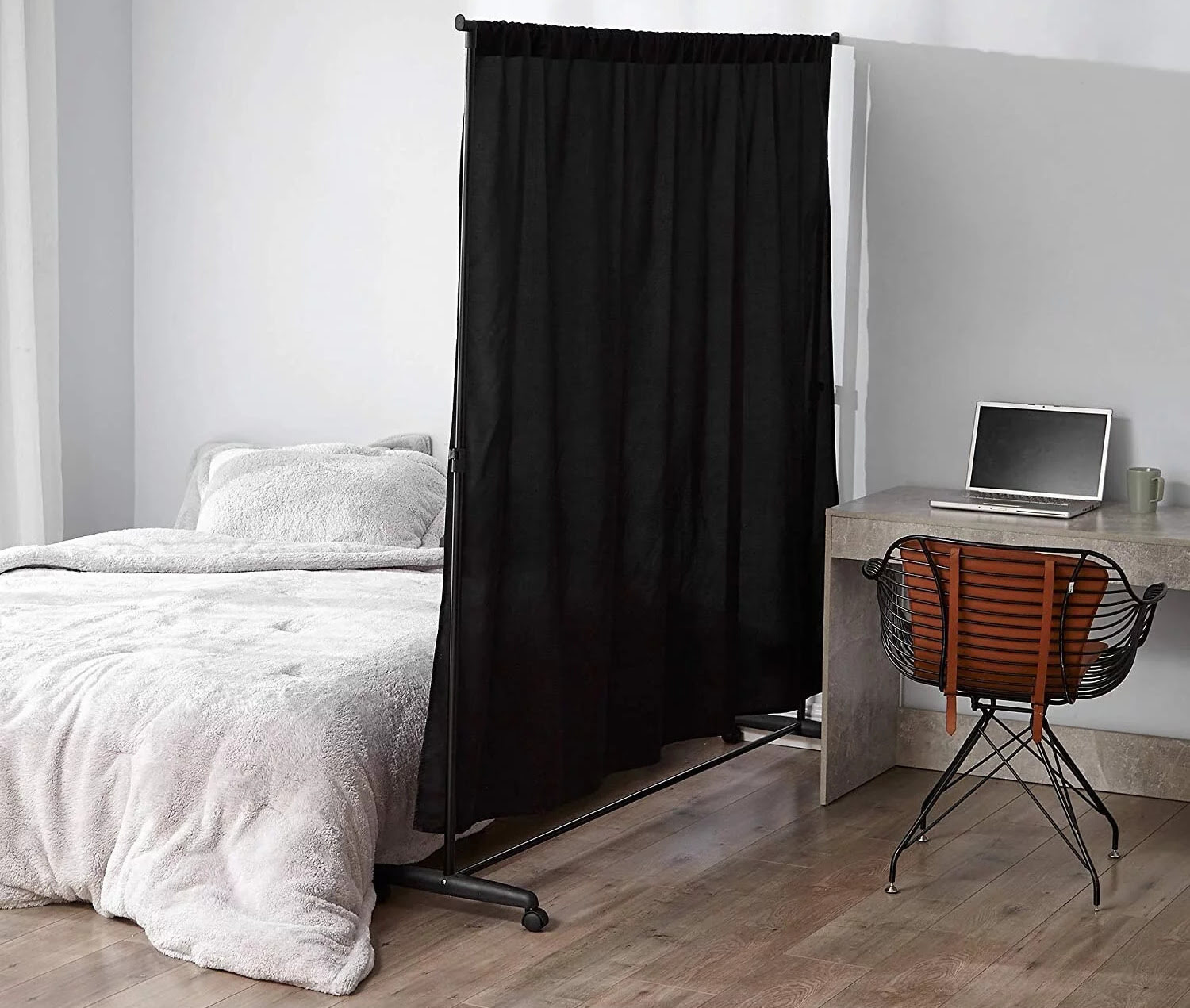


0 thoughts on “How To Divide Room With Curtains”